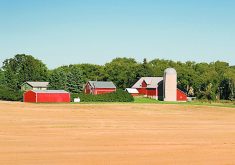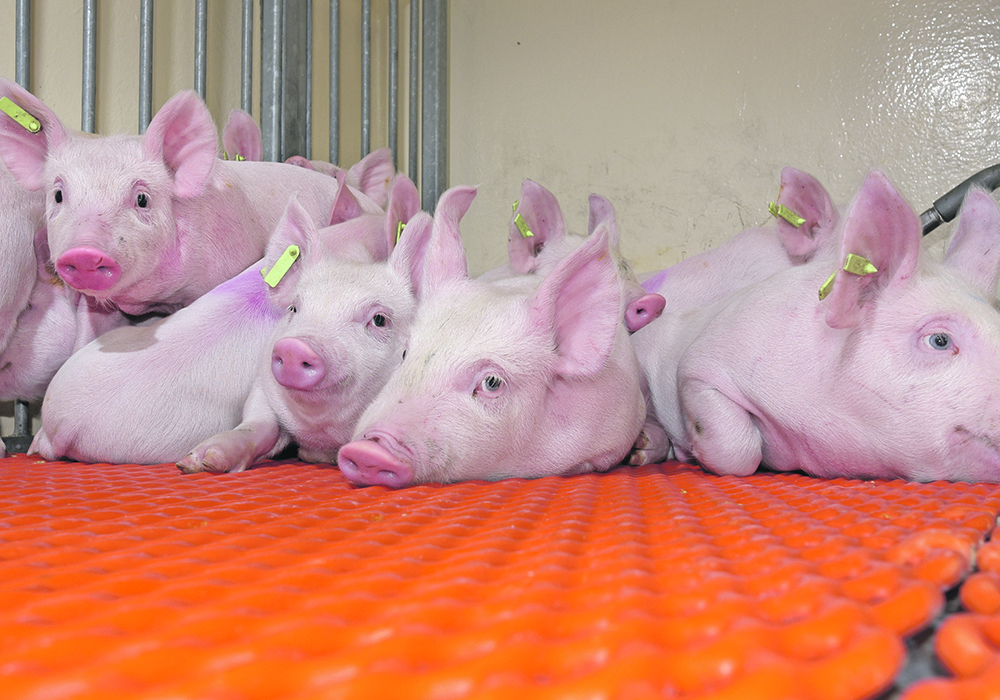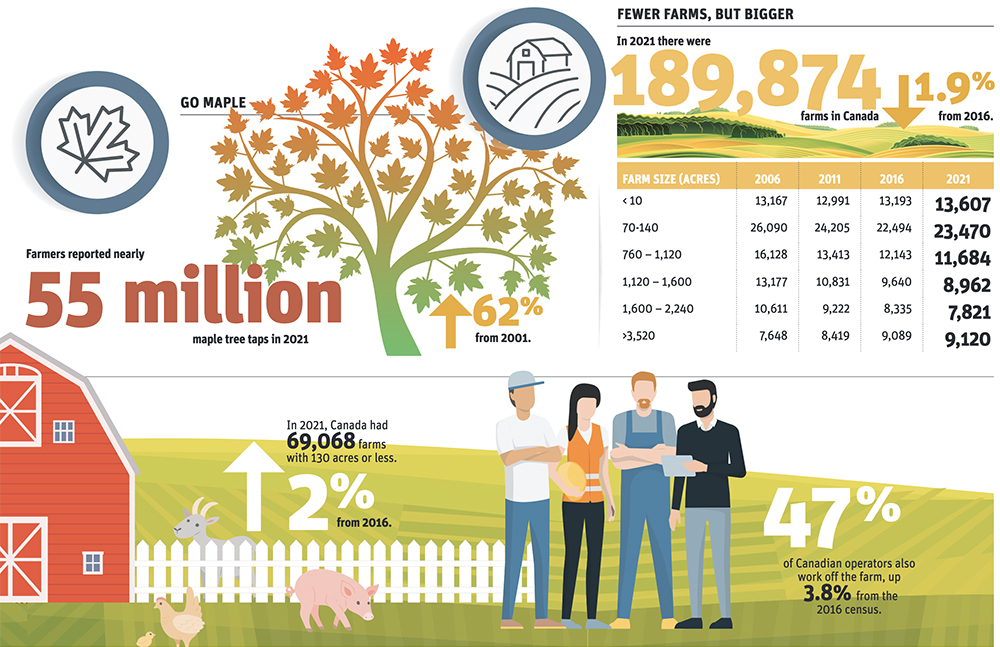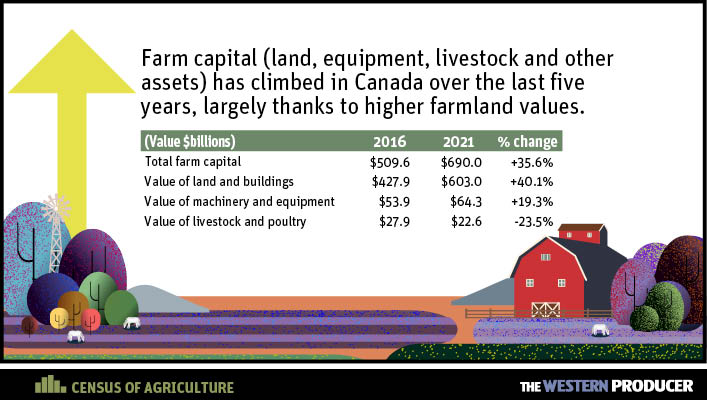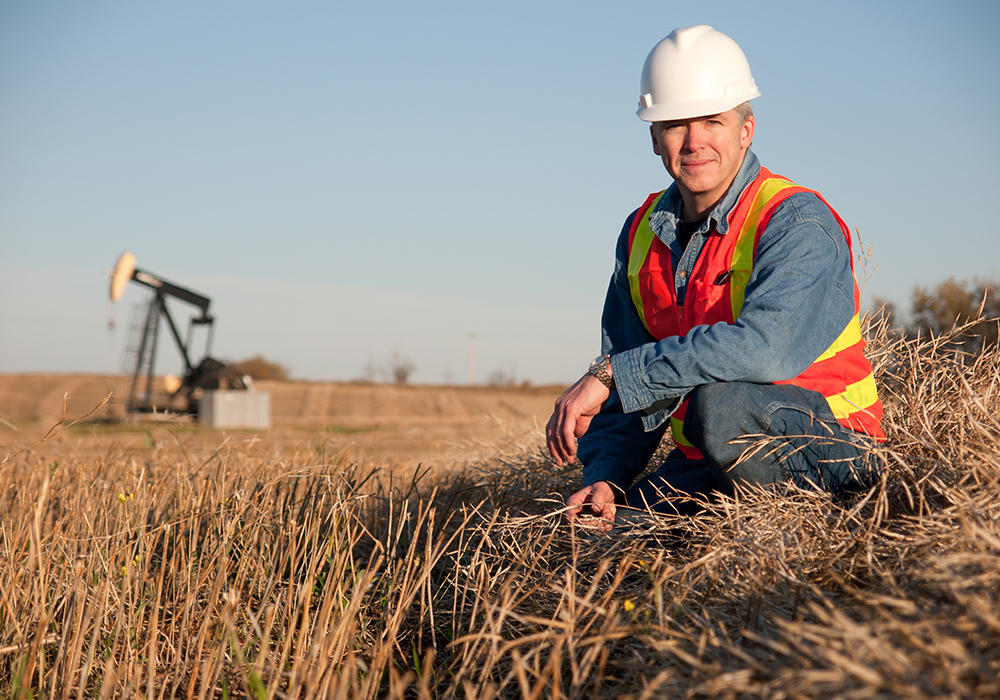Farms are getting larger, farmers are getting older and the value of farm capital continues to climb.
The first tranche of data from the 2021 agricultural census released last week shows the continuing trend toward a more consolidated industry.
The total number of farms dropped by 1.9 percent to 189,874; that’s the smallest decline in 25 years. The number of farm operators decreased 3.5 percent to 262,455.
Related story: Farming by the numbers
Of those farms, 34.3 percent are grain and oilseed operations and 20.9 percent are beef and feedlots.
Sebastien Larochelle-Cote, assistant director for the agriculture division at Statistics Canada, is in charge of the ag census.
“In almost every subsector (we saw) an increase in the consolidation of the industry,” he said in an interview. “Larger farms becoming more prominent, having a larger share of the pie in terms of operating revenue, we see that in almost every subsector.”
At the same time there is growth in niche sectors. For example, in Alberta the number of smaller operations producing beef slightly increased.
These types of operations behave differently than larger farms, said Larochelle-Cote.
“They tend to use a lot more direct marketing techniques, so they adapt to a different type of market. It’s a completely different way of doing business, so it cannot be compared to a large operation with $2 million plus in sales,” he said.
Operations with sales of $2 million or more account for 51.5 percent of total revenue, up 10 percent.
The average age of farm operators is now 56, up one year since the 2016 census. And the median age, which separates the oldest and the youngest, has increased by two years to 58.
Larochelle-Cote said that is “quite stunning.”
“That’s never been seen before, not since the collection of data in recent history,” he said.
Given that the median age of Canadians is 41.6, farming is an occupation with some of the oldest operators.
That is possibly linked to the decline in the number of operators and increase in concentration.
“They’re getting out. What’s left is being picked up by larger operations,” he said.
Overall, the proportion of farmers aged 55 or older rose by six percentage points to 60.5 percent, while the proportion of those under 35 dropped slightly from 9.1 to 8.6 percent.
Western farmers are not as old, on average, as those in the East and Manitoba has the greatest percentage of farmers younger than 35. Larochelle-Cote said this points to the possible dynamism of the industry in Western Canada.
Nova Scotia, Newfoundland and Labrador, and British Columbia had the most farmers aged 55 and older, all at about 67 percent of their operators.
On the Prairies, 62 percent of Alberta’s farmers are in that age bracket, followed by 29 percent between 35 and 54, and nine percent under 35.
Saskatchewan farmers older than 55 account for slightly more than 60 percent, with 29.6 percent between 35 and 54 and 9.75 percent under 35.
In Manitoba, 55.8 percent are 55 or older, while 32.7 percent are 35 to 54 and 11.45 percent are younger than 35.
He said the data indicates that agriculture is resilient in the face of many challenges, including weather, markets and the COVID-19 pandemic. Crop acreage and inventories of major livestock remain relatively steady to higher.
The data also show ongoing adaptation and transformation of the industry through the adoption of technology and renewable energy, he added.
One barrier the data suggests is that the price of land is keeping young and new entrants out of the industry. The reported increase in the market value of land and buildings averaged 23 percent to $608 billion.

Larochelle-Cote said the implications of higher land values differ across the country and for different operators. The figures will add to the debate over land use and rural vs. urban interests.
The definition of a farm operator was changed for this census to essentially eliminate hobby farms that didn’t represent the majority of production.
The number of female operators increased for the first time in 30 years to account for 30.4 percent.
Other notable findings include the rise of greenhouse operations by 23 percent, farms with sales less than $10,000 accounted for nearly half of direct sales, and only about 12 percent of farms have succession plans.
More operators, nearly 47 percent, are working off the farm. That is up 3.8 percent.
The response rate of the survey was 86 percent, which Larochelle-Cote said was typical through all regions and gives him confidence in the data.
Statistics Canada released about three million data points last week and plans to release more information in mid-June.





